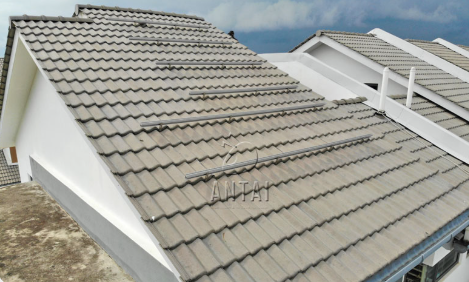Practical Tips for Using a Durable Tile Roof Hook
October 29, 2025
Solar installations on tile roofs present unique challenges for installers. Fragile tiles, varying profiles, and the need to maintain roof integrity require careful planning and practical solutions. Understanding how to work efficiently with a durable tile roof hook can save labor costs, reduce errors, and ensure long-lasting solar systems.

Flexible Hooks for Multiple Tile Profiles
Tile roofs come in flat, curved, and interlocking designs, each requiring specific handling during installation. A versatile, durable tile roof hook allows installers to work across these different profiles using a single product. This flexibility reduces the need for multiple mounting systems on one project, streamlining workflows and simplifying inventory management. By using adaptable hooks, crews can maintain consistent panel alignment and minimize complications on varied roof sections.
Protecting Roof Integrity
Tile roofs are delicate, and improper installation can cause cracking or leaks. Installers should ensure that hooks distribute weight evenly across tiles and avoid unnecessary roof penetrations. Properly engineered durable tile roof hooks safeguard the roof structure while keeping panels secure. By preventing damage during installation, teams save time on repairs and avoid potential issues that could compromise the solar system’s long-term performance.
Pre-Assembled Components for Faster Setup
Labor efficiency is critical for commercial solar projects. Hooks with pre-assembled components allow installers to focus on securing panels rather than adjusting individual parts. Using a durable tile roof hook with pre-assembled elements speeds up the installation process, reduces errors, and lowers labor costs. Crews can complete projects more quickly while maintaining high-quality standards.
Streamlined Project Workflow
Using a single hook system compatible with multiple tile profiles reduces the need for multiple products on-site. This simplification allows installation teams to plan better, allocate resources efficiently, and maintain safety standards. For larger projects, such efficiency translates to smoother scheduling, fewer delays, and better overall project management.
Conclusion
When looking for tile roof hooks, installers should emphasize those that are durable, easy to use, and flexible. Easy installation, compatibility with various tile kinds, and preservation of roof integrity are the three most important features of a long-lasting tile roof hook. Project efficiency and solar system reliability are guaranteed by paying close attention to these practical elements. Durable tile roof hooks made for versatile installation across a variety of tile designs are available at Antaisolar. Our solutions ensure effective deployment of solar panels and long-term system performance by safeguarding roof surfaces and simplifying on-site tasks for installers. This helps businesses save time and money.

Flexible Hooks for Multiple Tile Profiles
Tile roofs come in flat, curved, and interlocking designs, each requiring specific handling during installation. A versatile, durable tile roof hook allows installers to work across these different profiles using a single product. This flexibility reduces the need for multiple mounting systems on one project, streamlining workflows and simplifying inventory management. By using adaptable hooks, crews can maintain consistent panel alignment and minimize complications on varied roof sections.
Protecting Roof Integrity
Tile roofs are delicate, and improper installation can cause cracking or leaks. Installers should ensure that hooks distribute weight evenly across tiles and avoid unnecessary roof penetrations. Properly engineered durable tile roof hooks safeguard the roof structure while keeping panels secure. By preventing damage during installation, teams save time on repairs and avoid potential issues that could compromise the solar system’s long-term performance.
Pre-Assembled Components for Faster Setup
Labor efficiency is critical for commercial solar projects. Hooks with pre-assembled components allow installers to focus on securing panels rather than adjusting individual parts. Using a durable tile roof hook with pre-assembled elements speeds up the installation process, reduces errors, and lowers labor costs. Crews can complete projects more quickly while maintaining high-quality standards.
Streamlined Project Workflow
Using a single hook system compatible with multiple tile profiles reduces the need for multiple products on-site. This simplification allows installation teams to plan better, allocate resources efficiently, and maintain safety standards. For larger projects, such efficiency translates to smoother scheduling, fewer delays, and better overall project management.
Conclusion
When looking for tile roof hooks, installers should emphasize those that are durable, easy to use, and flexible. Easy installation, compatibility with various tile kinds, and preservation of roof integrity are the three most important features of a long-lasting tile roof hook. Project efficiency and solar system reliability are guaranteed by paying close attention to these practical elements. Durable tile roof hooks made for versatile installation across a variety of tile designs are available at Antaisolar. Our solutions ensure effective deployment of solar panels and long-term system performance by safeguarding roof surfaces and simplifying on-site tasks for installers. This helps businesses save time and money.
end
